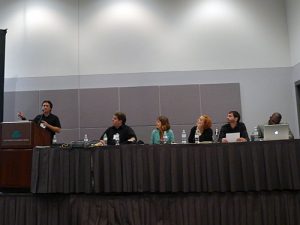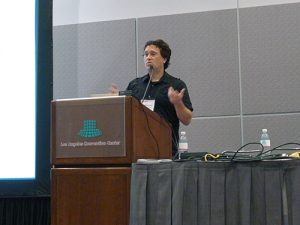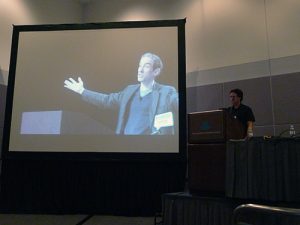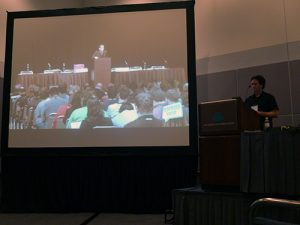Code As Craft; College Arts Association Panel
Chair: Michael Salmond. Panel members: Ashley John Pigford, Jason Bernagozzi, Keon Pettiway, Rachel Beth Egenhoefer and Joel Swanson, and Victoria Bradbury.
INTRODUCTION
“Code as Craft” Panel Presentation, Mike Salmond speaking.
On Friday, February 24, at 5:30 pm on Level 2 of the Los Angeles Convention Center in California, a New Media Caucus panel was held to discuss methodologies for integrating coding as part of the art and design curriculum. The discussants were Ashley John Pigford from the University of Delaware, Rachel Beth Egenhoefer from the University of San Francisco (co-authoring a paper with Joel Swanson from the University of Colorado), Keon Pettiway from East Carolina University, Jason Bernagozzi from Alfred State College, State University of New York and Victoria Bradbury from Ball State University.
The blueprint and focus of the panel came from my own personal experience of writing a book, The Fundamentals of Interactive Design (AVA Publishing 2012), and my resulting examination of my own methodologies for teaching coding within an interactive media curriculum. Then the media push surrounding the book Program or Be Programmed, by Douglas Rushkoff in 2011, served as a synthesis for how we as educators and artists should be centralizing the teaching of code as a craft in the art and design curriculum.






